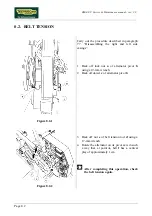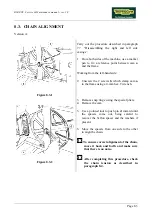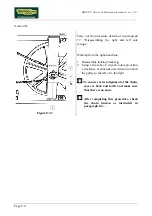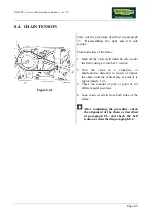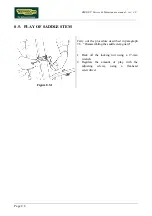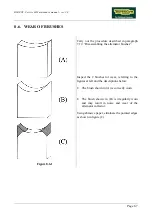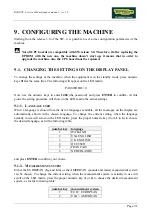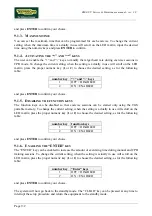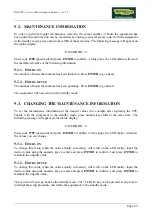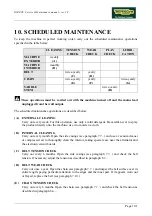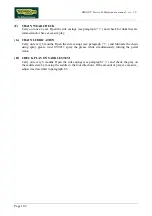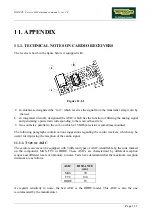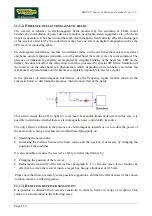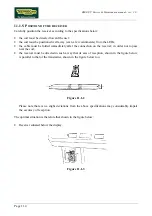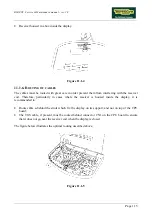
BIKE XT: Service & Maintenance manual - rev. 2.0
Page 11.2
11.1.2.
P
RESENCE OF ELECTROMAGNETIC FIELDS
The receiver is sensitive to electromagnetic fields produced by the switching of LEDs, motor
brushes, the commutation of power devices, monitors, neon lights, stereo equipment, etc., which can
impair its operation. It has been found that such electromagnetic fields directly affect the analog part
of the receiver (detected by the coil) whereas they have no effect on digital components such as the
CPU receiver connecting cable.
Electromagnetic interference can take two different forms: on the one hand, the receiver may detect
and hence generate spurious transients, or on the other hand the receiver may become saturated. The
presence of transients is generally accompanied by irregular blinking of the heart rate LED on the
display, but does not affect the value shown which is processed by special SW filters. Saturation of
the receiver, on the other hand, is a phenomenon which, depending on its intensity, can reduce the
maximum reception distance until it becomes completely impossible to receive a signal.
In the presence of electromagnetic interference, use the frequency signal monitor shown in the
schematic below to determine the presence, intensity and effect of the fields.
This circuit causes the LED to light for every heart beat and/or transient detected: in this way it is
possible to determine whether there is electromagnetic noise, and identify its source.
The only effective solution in the presence of electromagnetic interference is to reduce the power of
the noise source, using a trial and error method based principally on:
•
Shielding the noise source.
•
Increasing the distance between the noise source and the receiver, if necessary by changing the
position of the machines.
It is also possible to reduce the receiver’s ability to detect interference by:
•
Changing the position of the receiver;
•
Reducing the sensitivity of the receiver (see paragraph 11.1.3. ) In some cases, it was found to be
effective to screen the receiver inside a tagger box having a thickness of 0.15 mm.
Please note that these are merely some possible suggestions, and that the effectiveness of the chosen
solution must be verified in practice.
11.1.3.
R
EDUCING RECEIVER SENSITIVITY
It is possible to diminish the receiver’s sensitivity in order to reduce its range of reception. This
solution is recommended in the following cases:
Summary of Contents for BIKE XT
Page 1: ...SERVICE MAINTENANCE MANUAL REV 2 0...
Page 2: ......
Page 4: ......
Page 16: ...BIKE XT Service Maintenance manual rev 2 0 Page 4 2 Page intentionally left blank...
Page 30: ...BIKE XT Service Maintenance manual rev 2 0 Page 6 12 Page intentionally left blank...
Page 46: ...BIKE XT Service Maintenance manual rev 2 0 Page 7 16 Page intentionally left blank...
Page 54: ...BIKE XT Service Maintenance manual rev 2 0 Page 8 8 Page intentionally left blank...
Page 58: ...BIKE XT Service Maintenance manual rev 2 0 Page 9 4 Page intentionally left blank...
Page 66: ...BIKE XT Service Maintenance manual rev 2 0 Page 11 6 Page intentionally left blank...
Page 67: ......

